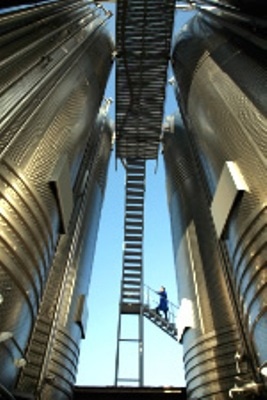Type 316L is the low carbon version of 316 stainless. With the addition of molybdenum, the steel is popular for use in severe corrosion environments due to the materials immunity from boundary carbide precipitation (sensitisation).

The material is widely used in heavy gauge welded components and weld annealing is only required where the material is for use in high stress environments. 316L has an extensive variety of uses especially in marine applications due to the materials high corrosion resistance.
Benefits of using Type 316L Stainless Steel
Benefits of using 316L stainless steel include:
- Low carbon content eliminates carbon precipitation in the welding process
- Can be used in severe corrosive environments
- Improved anti–corrosion scope due to added Molybdenum
- Weld annealing only required in high stress applications
- Very similar to Grade 316 in chemical composition and mechanical properties
316 & 316L steel plate and pipes have common properties and are often stocked with Dual Certification, where it is determined that both have properties and composition which comply with both steel types. Type 316H is excluded from this scenario by virtue of the fact that unlike 316 & 316L, 316H is engineered to work in elevated working temperatures.
Chemical Composition of Type 316L Stainless Steel
The chemical composition of Type 316L Stainless Steel is provided in the table below.
| UNS NO |
Grade |
C |
Si |
Mn |
P |
S |
Cr |
Mo |
Ni |
N |
| S31603 |
316L |
0.08 |
0.75 |
2.00 |
0.045 |
0.030 |
16.00/18.00 |
2.00/3.00 |
10.00/14.00 |
0.10 |
Mechanical Properties of Type 316L Stainless Steel
The mechanical properties of Type 316L Stainless Steel are provided in the table below.
| UNS No |
Grade |
Proof Stress
0.2% (MPa) |
Tensile Strength
(MPa) |
Elongation
A5(%) |
Hardness Max |
| HB |
HRB |
| S31603 |
316L |
170 |
485 |
40 |
217 |
95 |

This information has been sourced, reviewed and adapted from materials provided by Masteel UK Ltd.
For more information on this source, please visit Masteel UK Ltd